In a quiet workshop in Taipei, three young women meticulously sew and iron under the watchful eye of a master dressmaker with decades of experience in creating the classic qipao.
Lin Chin-te (林錦德), 74, is among a handful of craftsmen in Taiwan who still specialize in handmaking the high-collar, figure-hugging garment which was once part of many women’s daily wardrobes.
His workshop is hung with dresses, from elaborate long embroidered red silk qipaos to shorter length versions in more wearable materials.
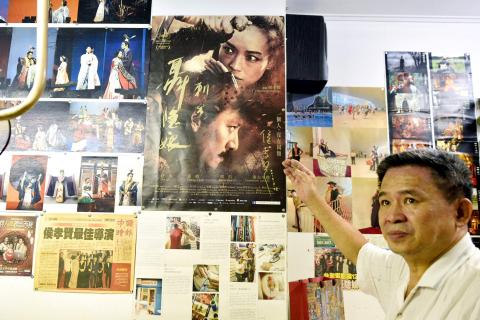
photo: AFP
Seen as increasingly impractical and pricier than off-the-peg versions, the tailormade qipao is now mostly worn at weddings and special events. Lin worries dressmakers will no longer learn his skills and takes on apprentices to pass down his know-how.
Hung Chu-tsu, 37, is one of Lin’s three 30-something female pupils.
“The master is very patient,” she says, wearing a knee-length blue floral qipao she made herself. “We start practicing from the basics and learn one stitch at a time.”
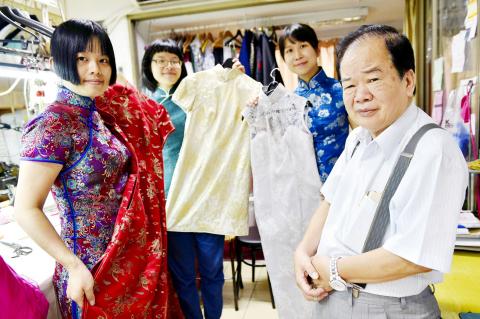
photo: AFP
Hung says she thinks qipaos are beautiful and left her career as a nurse to learn to be a dressmaker after having a child.
Her plan is to open her own shop, selling handmade qipaos adapted to a modern life. Often smiling, with braces holding up his trousers and a thimble wedged on his middle finger, Lin says he wants to ensure his 60 years of experience do not go to waste.
“I teach my pupils as much as I can and hopefully they can strike out on their own in the future,” he says.
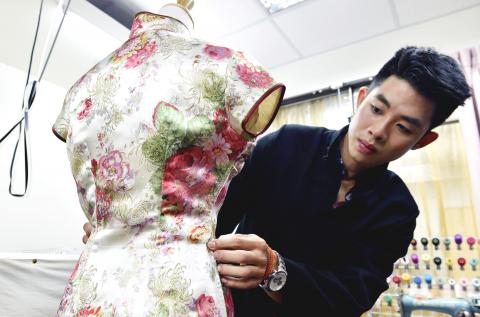
photo: AFP
“QIPAO HUNK”
The qipao — meaning “Qi robe” — began as a long, loose dress worn by the Manchus or “Qi” people who ruled China from the 17th century to the early 1900s. Its popularity took off in 1920s Shanghai when it was modified into a fitted must-have, favored by actresses and intellectuals as a symbol of femininity and refinement.
Also known as cheongsam in Cantonese, it fell out of favor in China after communist forces seized power in 1949 following the Chinese Civil War and the dress became associated with capitalism.
But the qipao gained a following in Taiwan, where defeated Chinese Nationalist Party (KMT) leader Chiang Kai-shek (將介石) set up a separate government after fleeing China. Chiang’s glamorous wife Soong Mei-ling (宋美齡) belonged to Shanghai high society and was a qipao enthusiast, influencing trends in Taiwan. Many women wore the dress daily until the 1970s.
Mass-produced, cheaper clothes eventually dented its appeal and some designers say recent growing anti-China sentiment has also put off young people as they associate the dress with that country’s culture. However, Lee Wei-fan (李威樊), 25, says there is still a fanbase. He studied qipao making under an old master for five years after deciding to carve out a niche in a field few of his design peers wanted to go into. Lee opened his own business six months ago and has built a following on social media where he goes under the name “Qipao Hunk” — something he blushes to admit was a publicity stunt.
His clients range from brides to businesswomen who see the dress as elegant. Lee says there is increasing interest in traditional Asian styles, which he hopes to tap into.
“Those of us who have a rarer craft will be more competitive,” he says.
Neither Lin nor Lee would reveal their prices but a master dressmaker charges from around US$260, not including the price of fabric.
CINEMATIC APPEAL
Arguably Taiwan’s most famous qipao maker, Chen Chung-hsin (陳忠信), 65, regularly opens up his modest workshop to tour groups and school trips to build enthusiasm for qipao making. Known for creating costumes for movies including Taiwanese director Hou Hsiao-hsien’s (侯孝賢) Cannes-winning martial arts epic The Assassin, Chen learned his skills from his father and inherited his shop. He says he makes qipaos “with a happy heart” for his clients.
“I hope that more people will see the traditional tailormade qipao is different from an off-the-peg one — mine flatters their shapes more,” says Chen. One of his loyal clients, Taipei marketing executive Yogi Ma, has set up a qipao club aimed at making the classic dress a daily wardrobe staple once more, saying it can suit any figure and can be modernized using different cuts and fabrics.
“The qipao is very elegant and pretty, it’s a pity that fewer women wear them now,” says Ma, 42, who sees it as representing the “beauty of ethnic Chinese women.”
Her Facebook-based club has over 4,000 followers and arranges events where members wear the dress to take part in activities, from whiskey tasting to flower arranging. She hopes that by promoting the dress she will help skills like Chen’s survive.
“If more people like the qipao, there won’t be an issue of lacking people to learn the craft,” she said.

In recent weeks the Trump Administration has been demanding that Taiwan transfer half of its chip manufacturing to the US. In an interview with NewsNation, US Secretary of Commerce Howard Lutnick said that the US would need 50 percent of domestic chip production to protect Taiwan. He stated, discussing Taiwan’s chip production: “My argument to them was, well, if you have 95 percent, how am I gonna get it to protect you? You’re going to put it on a plane? You’re going to put it on a boat?” The stench of the Trump Administration’s mafia-style notions of “protection” was strong
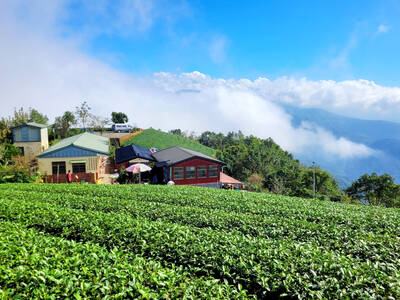
Every now and then, it’s nice to just point somewhere on a map and head out with no plan. In Taiwan, where convenience reigns, food options are plentiful and people are generally friendly and helpful, this type of trip is that much easier to pull off. One day last November, a spur-of-the-moment day hike in the hills of Chiayi County turned into a surprisingly memorable experience that impressed on me once again how fortunate we all are to call this island home. The scenery I walked through that day — a mix of forest and farms reaching up into the clouds

Late last month US authorities used allegations of forced labor at bicycle manufacturer Giant Group (巨大集團) to block imports from the firm. CNN reported: “Giant, the world’s largest bike manufacturer, on Thursday warned of delays to shipments to the United States after American customs officials announced a surprise ban on imports over unspecified forced labor accusations.” The order to stop shipments, from the US Customs and Border Protection (CBP), came as a surprise to Giant, company officials said. Giant spokesman Ken Li (李書耕) said that the CPB never visited the company’s factories to conduct on-site investigations, nor to interview or
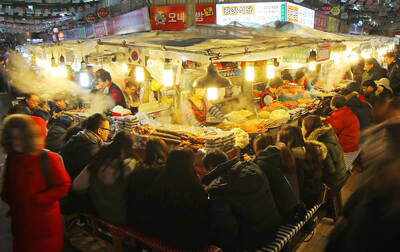
“Eighteen years ago, people didn’t even know the name of this ingredient,” says 58-year-old Gil Sa-hyeon, holding up a cluster of dried brownish stems. “Now it’s everywhere.” His shop, Joseon Yakcho, sits in the heart of Seoul’s Yangnyeongsi Market, South Korea’s largest traditional medicinal herb market, its streets lined with shops displaying buckets of herbs such as licorice root and cinnamon bark that spill on to the pavements, filling the air with their distinct, earthy aroma. The ingredient Gil is referring to is hovenia dulcis, known in Korean as heotgae — the oriental raisin tree that’s become the cornerstone of South Korea’s